Planting And Growing Holly: Featuring Sue Hunter From The Holly Society Of America

TREES > HOLLY

Elizabeth is a Permaculture Garden Designer, Sustainability Consultant and Professional Writer, working as an advocate for positive change. She graduated from the University of St. Andrews with an MA in English and Philosophy and obtained a Diploma in Applied Permaculture Design from the Permaculture Association.
Reviewed By DAN ORI

Dan has over 27 years’ under his belt caring for plants and gardens. Working as a Horticultural Instructor and Consultant, he draws on a diverse range of experience that includes working as a Head Gardener, Tree Surgeon, Garden Centre Trouble Shooter, and writer of academic papers. Dan has a Level 3 Diploma in Horticulture and is currently a candidate for the RHS’s most prestigious award – The Master of Horticulture.
Contributions From SUE HUNTER

Sue Hunter is the President of the Holly Society of America, a non-profit focused on Ilex care, with members both in America and across the world.
HOLLY GUIDES
Holly trees and shrubs can be extremely beneficial additions to many gardens.
There are a number of different plants that have the common name holly, but in UK gardens, when we talk about holly, we are most commonly talking about our native plant – Ilex aquifolium.
It is also this holly that we refer to specifically in this guide.
“Hollies are beautiful and aesthetically pleasing year-round, whether they’re deciduous or evergreen,” says Sue Hunter, President of the Holly Society of America, when asked why she values Ilex so much.
“Holly fruit and flowers have exceptional wildlife value, are disease and pest resistant, and require little maintenance once established.”
Overview
| Botanical Name | Ilex aquifolium |
| Common Name(s) | Holly |
| Plant Type | Shrub / Tree |
| Native Area | Europe including the UK |
| Hardiness Rating | H6 |
| Foliage | Evergreen (can also be deciduous) |
| Flowers | Small and white followed by red berries on female plants only |
| When To Plant | November to February |
Sunlight
Preferred
Full Sun or Part Shade
Exposure
Exposed or Sheltered
Size
Height
2 – 12M
Spread
4 – 8M
Bloom Time
May to June
Soil
Preferred
Most fertile soils
Moisture
Moist but well-drained
pH
Any
Ilex aquifolium, also known as common holly, is one of more than 400 different holly species from around the world.1Ilex aquifolium: An Overview. (n.d.). Science Direct; Elsevier BV. https://doi.org/10.1016/b978-1-4557-0717-1.00039-9
Since it is a native species, it can be a particularly beneficial addition for the wildlife in British gardens.
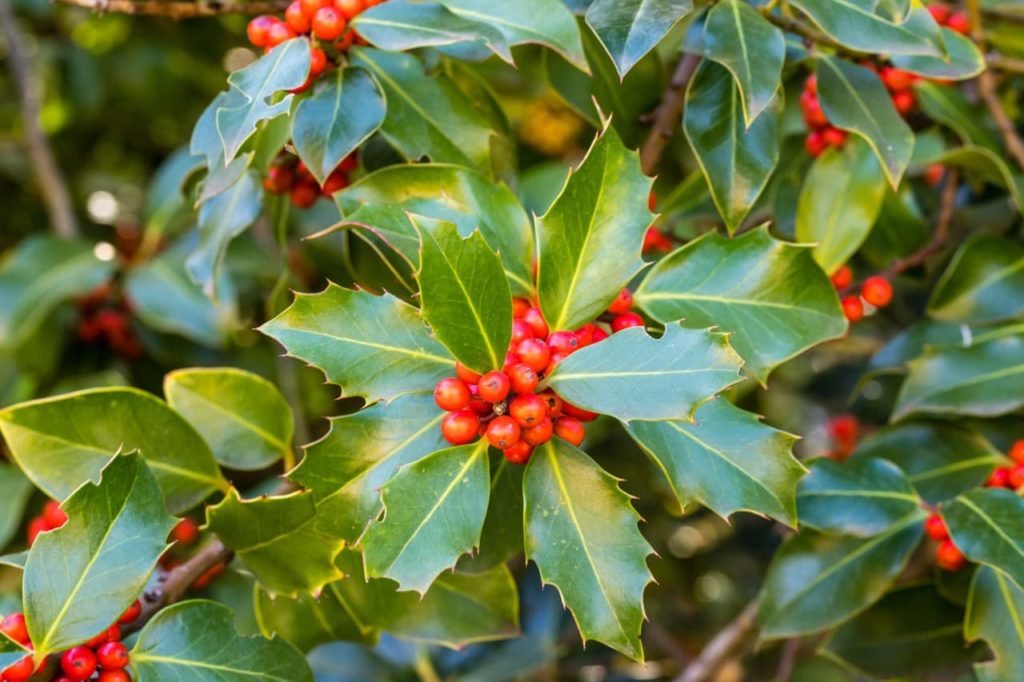
Our native holly is evergreen and is strongly associated with Christmas and the festive season.2Five things you never knew about holly. (n.d.). National Trust. Retrieved March 30, 2023, from https://www.nationaltrust.org.uk/discover/nature/trees-plants/five-things-you-never-knew-about-holly
However, this is a plant that, whether it is a female with berries or not, can look good and serve a purpose in our gardens all year round.
Common Varieties
As mentioned above, Ilex aquifolium is a great choice for British gardeners, though it is one of many hollies from around the world.
“My favourite species of Holly is our American native evergreen Holly, Ilex opaca,” explains Susan.
“There is huge diversity within the species relative to leaf and berry colour, shape and growth habit.
“As a propagator of native species, it is important to educate all about species that are indigenous to their specific geographical area, no matter which continent they live on.
“I also like Ilex pedunculosa for its soft, evergreen leaves, eclectic growth habit and berry set.”
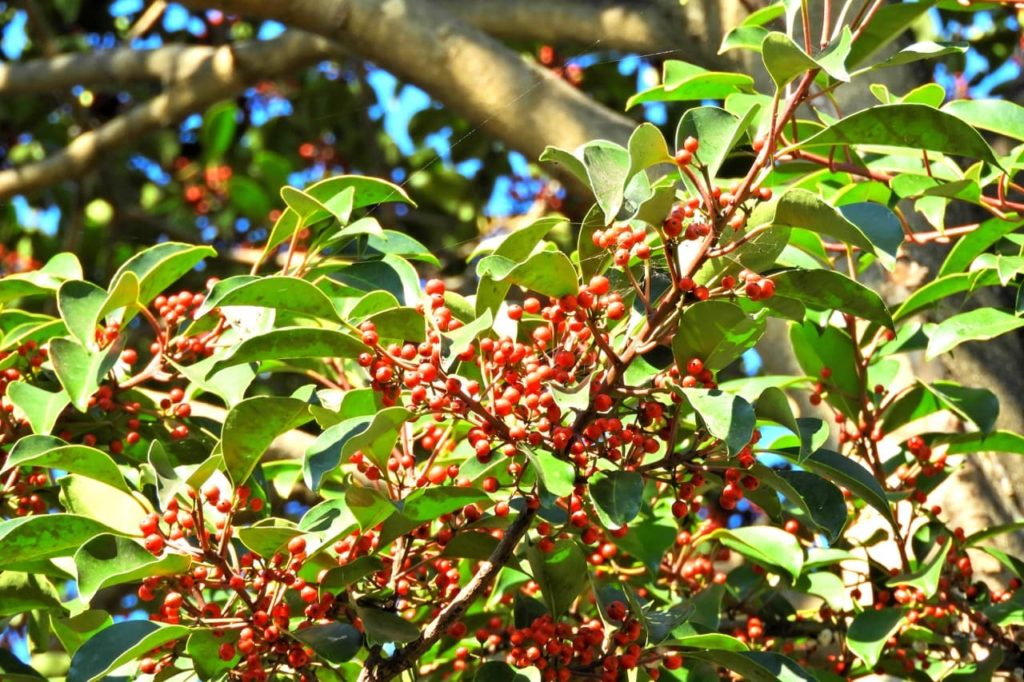
Several others might also make good choices for our climate and conditions, including Japanese holly, also known as I. crenata.
However, for an eco-friendly, wildlife-friendly and sustainable garden, I, like Susan, would always recommend selecting native choices where possible.
Fortunately, there are plenty of cultivars of native holly to choose from here in the UK.
Here are some holly varieties that have received an RHS Award of Garden Merit; horticultural expert Dan Ori has provided information on whether they are male, female, or self-fertile:
- I. aquifolium ‘Amber’ (female)
- I. aquifolium ‘Argentea Marginata’ (female)
- I. aquifolium ‘Ferox Argentea’ (male)
- I. aquifolium ‘Golden Queen’ (male)
- I. aquifolium ‘Heterophylla’ (male or female)
- I. aquifolium ‘J. C. Van Tol’ (male & female flowers; this variety is self-fertile but berries better with a male variety nearby)
- I. aquifolium ‘Madame Briot’ (Female)
- I. aquifolium ‘Pyramidalis’ (male & female flowers; this variety is self-fertile but berries better with a male variety nearby)
• I. aquifolium ‘Silver Queen’ (male)
“As you can see, with holly varieties, you cannot rely on the name as an indication of whether a plant is male or female,” says Dan.
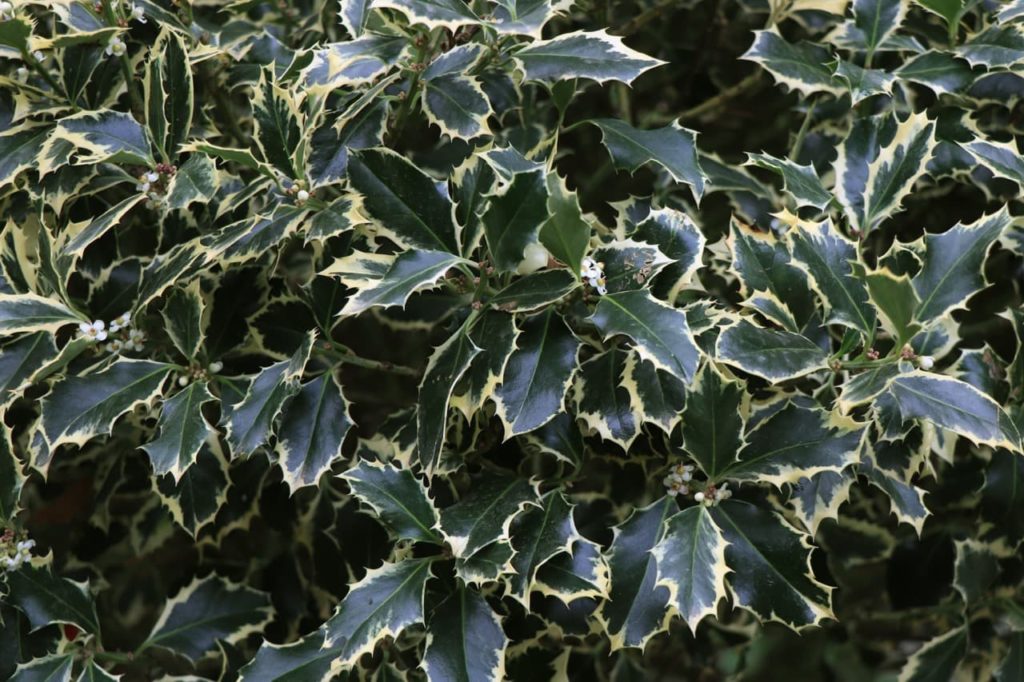
There are also hybrid hollies to choose from.
While many hollies have typical dark green leaves and bright red berries on the female plants, some have silver-margined leaves or other distinguishing characteristics that can enhance their ornamental appeal.
How To Grow Holly
Holly is a low-maintenance and straightforward plant to grow.
As long as you place it in the right position and make sure that it has the growing requirements that it needs, then you should find that, once established, it requires little to no care.
Preferred Site
Holly will thrive in a range of locations.
It can cope well with different soil types, in an exposed or sheltered location and in full sun or part shade.
Those with variegated leaves will tend to do better in full sun so that the leaves develop better colour, but most will still be happy in some shade.
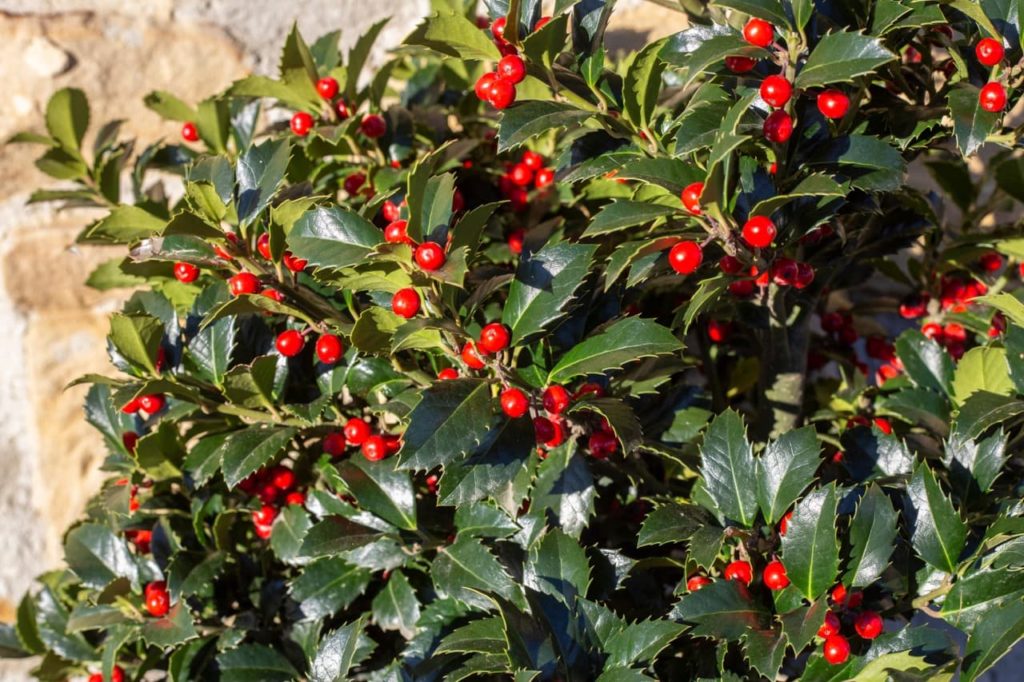
Any aspect can work well with the exception of a north-facing one, which may be too shaded for the best results when growing holly in your garden.
Holly can also work well as stand-alone shrubs or trees, in a mixed shrubbery, in an informal native hedgerow or in a shelter belt.
“Hollies are easy to grow, and look nice as a single specimen or planted in mass,” says Susan.
So, there are many ways that you might consider using it in your garden.
Propagation Methods
Holly is typically propagated by means of either semi-ripe or hardwood cuttings.
Semi-ripe cuttings are taken in the late summer or early autumn and hardwood cuttings are best started indoors, with bottom heat, in January.
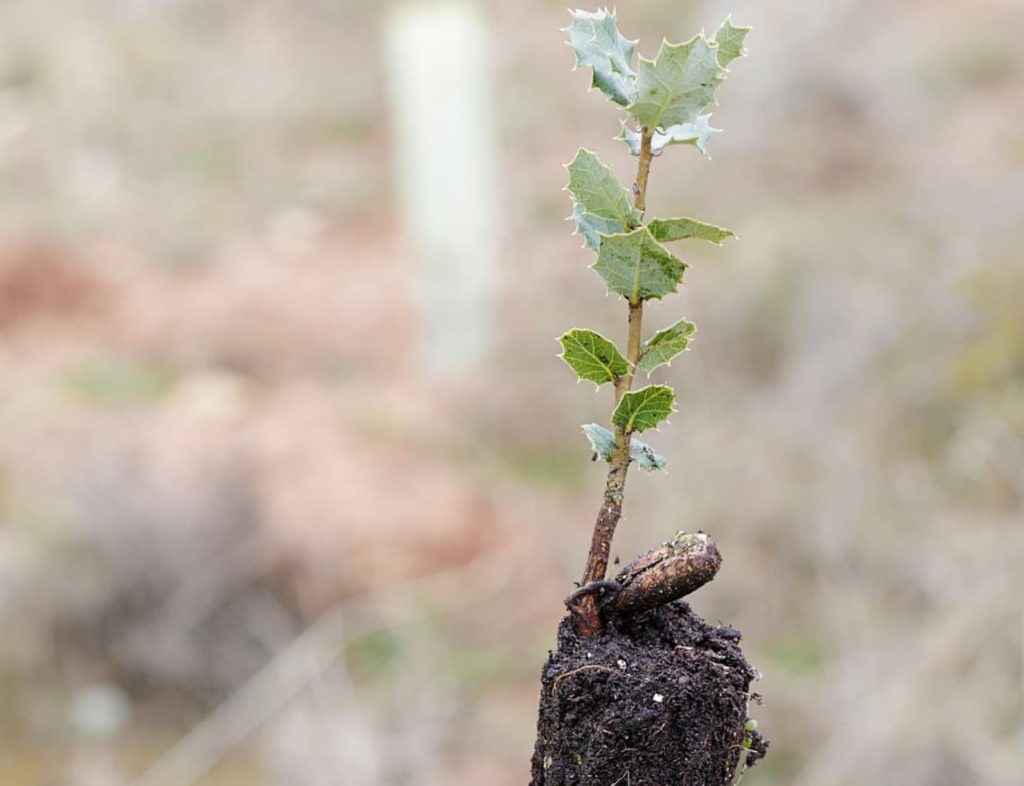
The first of these two options is generally the easier option if you would like to propagate your own plants.
Of course, you can also do what many gardeners will do and purchase a holly cultivar from a garden centre or plant nursery in a pot.
Most frequently, holly is planted between autumn and spring, and sometimes, when the ground is not too hard or waterlogged, over the winter months.
Planting Guidelines
It is best to plant out holly as quickly as possible after it arrives or you bring it home.
Prepare your new growing area by simply digging a generous hole to the same depth as the existing roots of the holly you have purchased which is a couple of times larger than the width.
Place the holly in the hole, making sure it is upright and that you are happy with the orientation, then fill the soil back in around the roots and firm it gently into place.
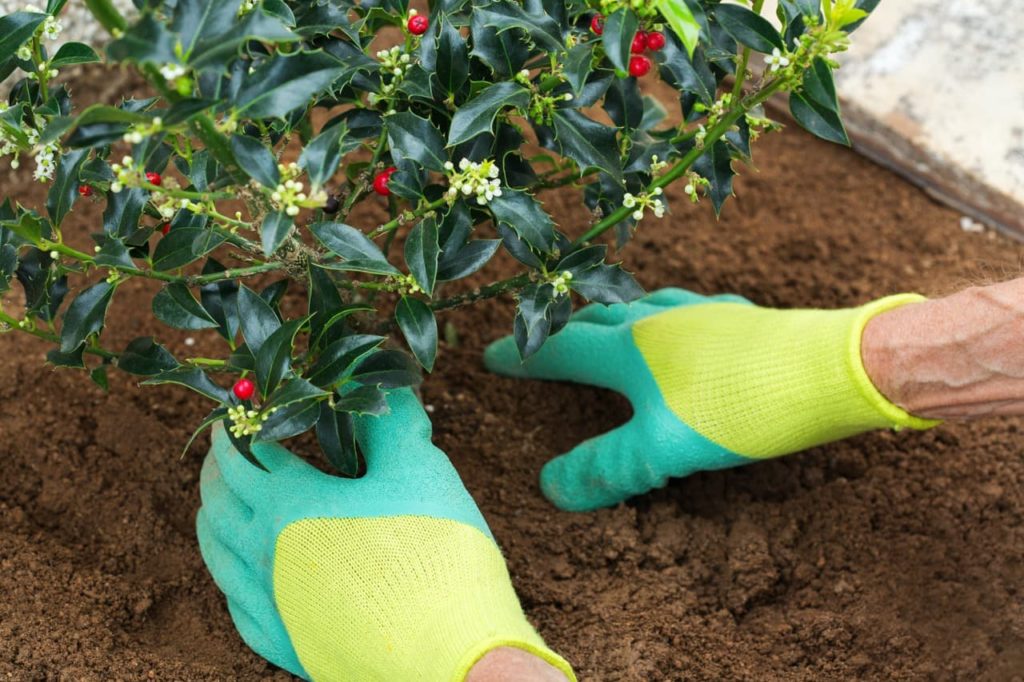
“Planting hollies too deeply is a common issue I see with gardeners,” says Susan.
“Planting holly at the level where the first root is emerging from the trunk is correct.”
Water your new holly in well, then mulch around the new shrub with homemade compost, leaf mould or other organic material.
“Do not pile too much mulch up around the trunk and be careful not to overwater,” warns Susan.
Ongoing Holly Care
As holly is so easy to care for and grow successfully, there really are very few guidelines to contend with.
Make sure it gets enough light, water and nutrients and you should rarely find that you have any issues at all.
Soil Requirements
As mentioned above, holly is unfussy when it comes to soil type.
It can thrive in a range of different soils, from chalk or sand to clay, as long as it is moist yet free-draining.
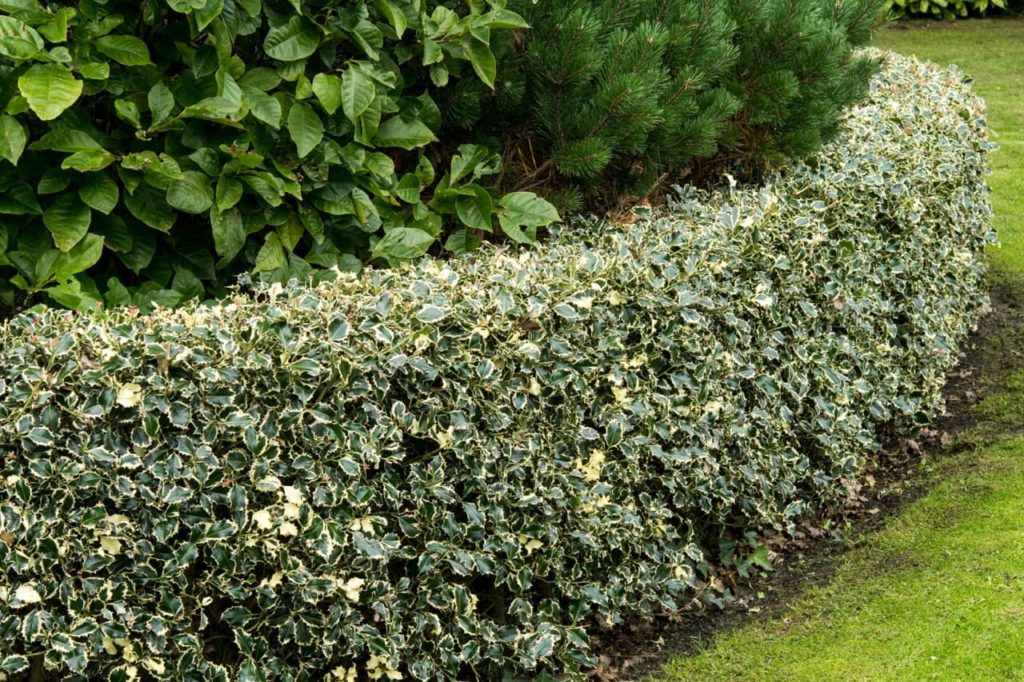
Holly is unfussy about pH and can thrive in acidic, neutral or alkaline soils, though it does have a favourite, as Susan shares:
“Hollies prefer acidic soil and organic material such as decomposing leaf litter worked into the soil.”
Light
As we have already intimated, holly can cope with full sun or part shade, but it is important to make sure that you do not try to position it in full shade, where it will not do as well.
Variegated hollies will do best in full sun where the colours will be more vibrant, though there are hollies with dark green leaves that can also cope with partial or dappled shade.
Watering
Water holly well upon planting and during any dry spells until it becomes well established.
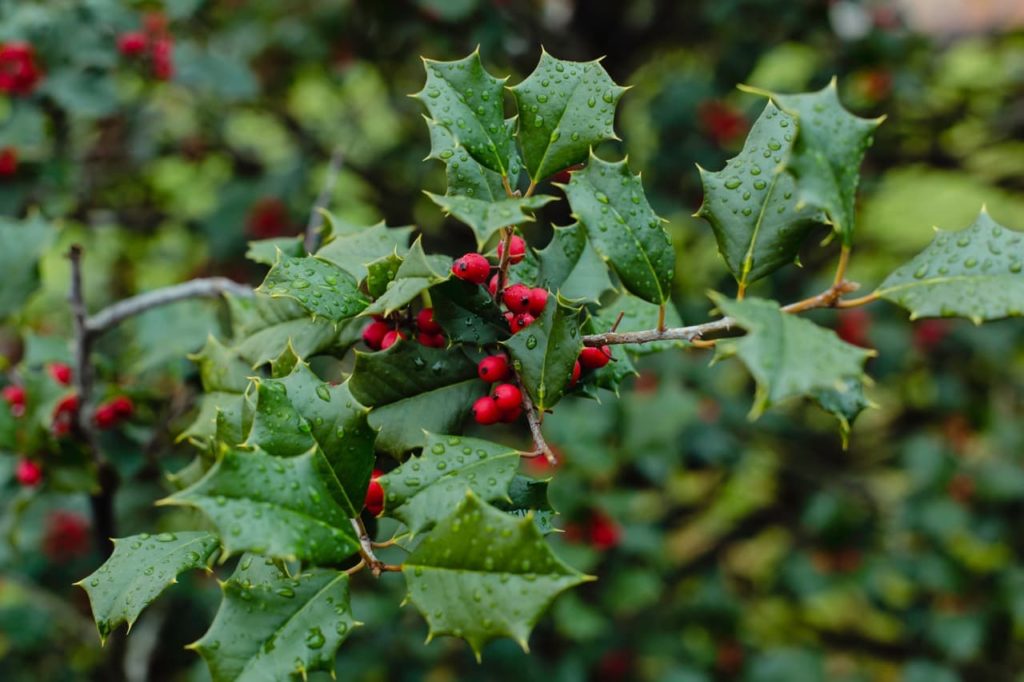
After this, natural rainfall should usually be sufficient in keeping holly hydrated, unless you are growing your shrub in a container.
Remember, container-grown plants will always need more frequent watering than those growing in the ground.
Feeding
When growing in moderately fertile soil, holly should not need additional fertilisation.
It is simply good practice to mulch around the plant upon planting and to replenish the organic mulch around your holly each spring.
This should provide slow-release fertility and make sure that you have a healthy soil in your garden.
Common Problems
Holly does not usually face many problems on the whole, but it can suffer from holly leaf blight, which is a fungal infection that discolours the stems and foliage.
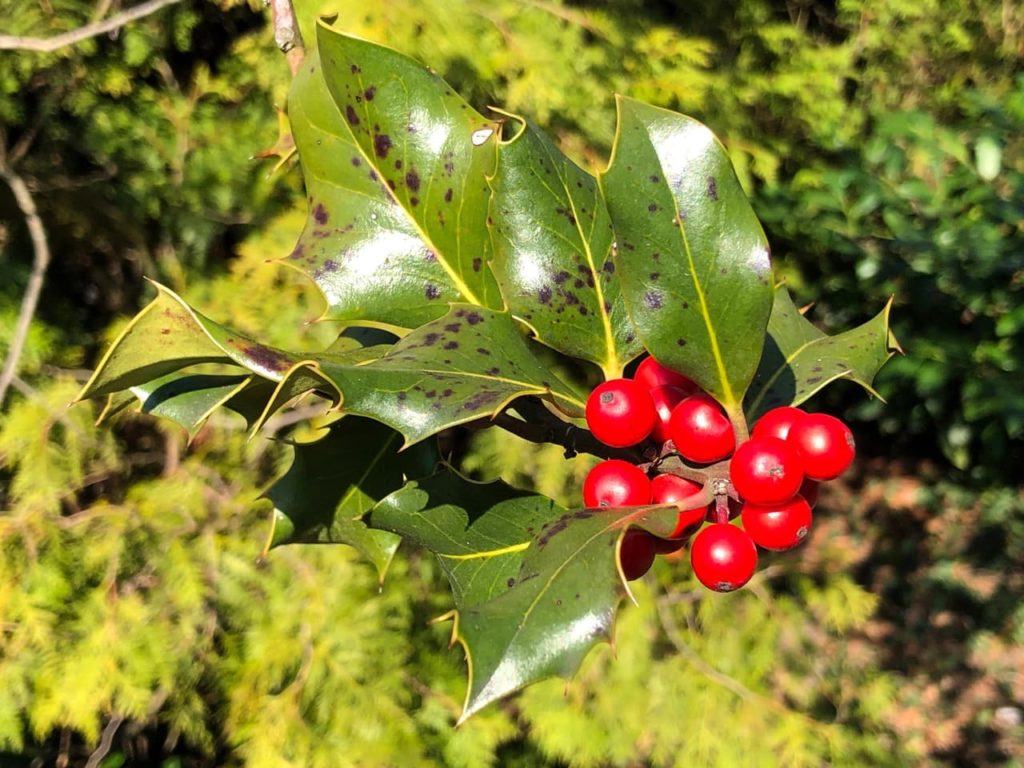
If you spot this problem, cut out the affected material right away and dispose of it carefully to prevent its further spread.
“Holly leaf miner (Phytomyza ilicis) is a common issue,” says Dan.
“The leaf will present blotches or channels that can look like they are drawn on, but the damage is actually inside the leaf and is caused by the larvae of a small fly.
“Leaf miner damage does not normally cause significant health issues for the plant, so it is best to treat it as a messy guest in your garden.”
References
- 1Ilex aquifolium: An Overview. (n.d.). Science Direct; Elsevier BV. https://doi.org/10.1016/b978-1-4557-0717-1.00039-9
- 2Five things you never knew about holly. (n.d.). National Trust. Retrieved March 30, 2023, from https://www.nationaltrust.org.uk/discover/nature/trees-plants/five-things-you-never-knew-about-holly
